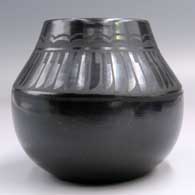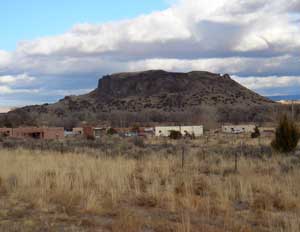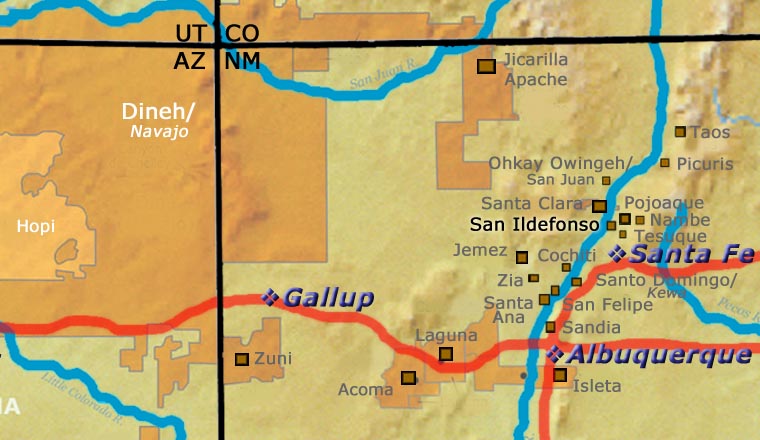
Florence Naranjo
San Ildefonso

Florence (Aguilar) Naranjo was born into San Ildefonso Pueblo in 1921. Her parents were Rosalie and Joe Aguilar. She learned to make pottery by watching and working with her parents and her grandmother, Susana Aguilar, as she grew up. Her mother, Rosalie, was from Picuris and had moved to San Ildefonso after marrying Joe. Joe was an excellent painter but he made only a very few pots. Susana taught Rosalie the San Ildefonso way, then Joe painted pots for both Susana and Rosalie.
Florence grew up in that creative atmosphere and while she learned how to make pottery and how to paint early in life, she didn't apply herself to making pottery until her children were grown. While her children were still at home, she applied herself more to weaving.
After Florence's children were grown and out of the house, she started to participate in the Santa Fe Indian Market, displaying her pottery and woven textiles. She earned several ribbons there, including a First Place ribbon for a hand-woven rug.
100 West San Francisco Street, Santa Fe, New Mexico 87501
(505) 986-1234 - www.andreafisherpottery.com - All Rights Reserved

San Ildefonso Pueblo
San Ildefonso Pueblo is located about twenty miles northwest of Santa Fe, New Mexico, west of Pojoaque, south of Santa Clara and straddling the Rio Grande. Although their ancestry has been traced to prehistoric pueblos in the Greater Mesa Verde area, the prehistoric pueblo at Tsankawi, in a non-contiguous parcel of Bandelier National Monument, is their most recent ancestral home. Tsankawi abuts the reservation on its northwest side.
Franciscan monks named the village after San Ildefonso and in 1617, forced the tribe to build a mission church on top of the village's main kiva. Before that the village was known as Powhoge, "where the water cuts through" (in Tewa). Today's pueblo was established as long ago as the 1300s. When the Spanish arrived in 1540, they estimated the village population at about 2,000.
That mission was destroyed during the Pueblo Revolt of 1680 and when Don Diego de Vargas returned to reclaim San Ildefonso in 1694, he found virtually all the Tewa people camped out on top of nearby Black Mesa. After an extended siege the two sides negotiated a treaty and the people returned to their villages. However, the next 250 years were not so good for them.
The swine flu pandemic of 1918 reduced the pueblo's population to about 90. Their population has grown to more than 600 since but the only economic activity available on the pueblo itself involves creating art in one form or another. The only other work is off-pueblo. San Ildefonso's population is small compared to neighboring Santa Clara Pueblo, but the pueblo maintains its own religious traditions and ceremonial feast days.
San Ildefonso is most known for being the home of the most famous Pueblo Indian potter, Maria Martinez. Many other excellent potters from this pueblo have produced quality pottery, too, among them: Blue Corn, Tonita and Juan Roybal, Dora Tse Pe and Rose Gonzales. Of course, the descendants of Maria Martinez are still important pillars of San Ildefonso's pottery tradition. Maria's influence reached far and wide, so far and wide that even Juan Quezada of the Mata Ortiz pottery renaissance in Chihuahua, Mexico, came to San Ildefonso to learn from her.
100 West San Francisco Street, Santa Fe, New Mexico 87501
(505) 986-1234 - www.andreafisherpottery.com - All Rights Reserved

